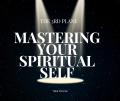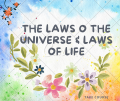
The text presents excerpts from the Bhagavad-gītā As It Is, offering a commentary on the scripture’s teachings. Central themes include the nature of the soul, the cycle of birth and death, and the path to liberation. The commentary emphasizes the importance of Kṛṣṇa consciousness as the means to transcend material existence and attain the Supreme Lord’s abode. Various yogic practices and the three modes of material nature (sattva, rajas, and tamas) are discussed in relation to spiritual progress. Finally, the text highlights the distinction between the individual soul and the Supreme Lord, emphasizing that true liberation involves understanding and serving Kṛṣṇa.
Frequently Asked Questions
- Why does Arjuna feel such deep distress and reluctance to fight in the Bhagavad Gita?
Arjuna is overwhelmed with grief and moral conflict upon seeing his relatives, teachers, and friends arrayed on both sides of the battlefield. He recognizes them not just as adversaries, but as family, elders and respected figures. He questions the value of a victory that comes at the cost of their lives, and wonders whether earthly gain, kingdom or happiness is worth such bloodshed. Arjuna also fears the negative karmic repercussions of killing his relatives. He expresses a deep fear of the social chaos and spiritual degradation he believes the war will create.
- What is Krishna’s initial response to Arjuna’s lamentations?
Krishna responds with a gentle, almost amused tone, acknowledging Arjuna’s distress. He begins by pointing out the fundamental misunderstanding Arjuna has about the nature of the self. He states that the self is eternal and that it is a mistaken illusion to think it is born or dies with the body. The physical body is temporary, but the soul is eternal. He emphasizes that the eternal soul cannot be destroyed, and therefore, Arjuna’s anxieties about killing are misplaced and based on a false identification with the body and the material world.
- What does the Bhagavad Gita say about the eternal nature of the soul?
The Gita states that the soul (atma) is eternal and does not cease to exist when the body dies. It emphasizes that the soul is atomic in size and is distinct from the material body. The soul is considered to be an eternal part of the divine. It is not born, nor does it die, it only transmigrates from one body to another. The Gita also highlights that this truth can be understood through proper intelligence and meditation, and through understanding the difference between the eternal and the temporary. The soul is untouched by the actions of the body.
- What is karma, and how does it affect an individual’s actions?
Karma refers to the law of action and reaction; each action has consequences. The Gita explains that all actions are impelled by the three modes of material nature (gunas): goodness (sattva), passion (rajas), and ignorance (tamas). Actions performed under the influence of the mode of goodness lead to purity and spiritual advancement, while actions under the influence of passion bind one to desires and material attachments, and actions under the influence of ignorance lead to delusion and spiritual degradation. The Gita advises performing actions without attachment to their fruits, as this frees one from the cycle of karmic reactions.
- What is the concept of dharma, and how should one act in accordance with it?
Dharma refers to one’s duty or righteous path, specifically one’s duty based on one’s nature and position in life. The Gita emphasizes that it is better to perform one’s own duty, even imperfectly, than to perform another’s duty well. Arjuna, as a warrior, is obligated by his dharma to engage in righteous battle. Fulfilling one’s prescribed duty without attachment to the results and as an offering to the Supreme is the path to liberation.
- What does the Gita teach about achieving spiritual liberation?
The Gita outlines several paths to liberation, primarily emphasizing the path of bhakti or devotion to the Supreme Lord (Krishna). It emphasizes focusing the mind and intellect on Krishna through meditation, selfless service, and constant remembrance. The Gita also advocates detaching from material desires and identifying oneself as a soul rather than a body. This detachment is said to lead to inner peace and understanding. The goal is to transcend the cycle of birth and death and attain a state of eternal consciousness and communion with the divine. Those who surrender their actions to Krishna, and who serve Him with devotion, will find liberation.
- What are the three modes of material nature (gunas), and how do they influence our existence?
The three gunas—sattva (goodness), rajas (passion), and tamas (ignorance)—are the fundamental forces that shape all aspects of existence in the material world. Sattva is characterized by purity, knowledge, and happiness. Rajas is characterized by passion, desire, and action driven by attachment, leading to material entanglement. Tamas is characterized by ignorance, delusion, inertia, and darkness. The gunas are always in interplay, and one can be dominant at any time, influencing thoughts, actions and perceptions. The Gita’s teaching is to transcend the influence of these modes by dedicating actions to Krishna and practicing bhakti yoga.
- What is the ultimate vision that Krishna reveals to Arjuna and what does it signify?
Krishna reveals his cosmic form (Vishvarupa) to Arjuna, an awe-inspiring display of infinite power, and terrifying form representing the entirety of the universe. The Vishvarupa reveals Krishna’s identity as the Supreme Personality of Godhead, the origin, maintainer, and destroyer of all existence. Seeing this divine manifestation overwhelms Arjuna with both wonder and fear, reinforcing the limitations of human perception. The vision serves to illustrate Krishna’s supreme control and the inevitability of his will and is intended to dissolve Arjuna’s attachment and hesitation to perform his duty. It establishes that every action, and even the passing of time itself, is ultimately under the control of the Supreme.
Quiz
- In the context of the Bhagavad Gita, describe the concept of dharma and how it applies to Arjuna’s situation. Dharma, in this context, refers to one’s duty or righteous path according to one’s nature and role in life; for Arjuna, a kshatriya (warrior), his dharma is to fight, and Krishna urges him to not deviate from it by being compassionate on the battlefield.
- Explain the significance of Krishna’s statement, “I am time, the destroyer of the worlds,” in the eleventh chapter. This statement conveys Krishna’s universal form ( vishvarupa), revealing his ultimate power and control over all of existence; he is the force that governs creation, preservation, and destruction. By revealing himself as Kala (time) Krishna is demonstrating to Arjuna that the events of the battle are already part of his divine plan.
- What is the difference between sattva, rajas, and tamas? Provide an example of each. Sattva, rajas, and tamas are the three modes of material nature; sattva is characterized by goodness, purity, and enlightenment (e.g., a wise scholar); rajas is characterized by passion, activity, and desire (e.g., a driven entrepreneur); and tamas is characterized by ignorance, inertia, and delusion (e.g., a lazy person).
- In what way is the concept of karma presented in the Bhagavad Gita and how does it relate to the idea of liberation? Karma refers to actions and their consequences; in the Gita it is not just about physical deeds but also intentions, and karma binds one to the cycle of birth and death, but by acting without attachment to the results, with knowledge and devotion to Krishna, one can be freed from the cycle of karma.
- Describe the qualities of a sthitaprajna (a person of steady wisdom) as outlined in the text. A sthitaprajna is someone who remains undisturbed by both suffering and happiness; they are free from attachment, fear, and anger, and maintain a constant state of equilibrium and detachment from the material world.
- Why does Arjuna express grief at the beginning of the Gita? Arjuna experiences deep sorrow because he sees his family members and teachers on both sides of the battlefield and is reluctant to engage in warfare against them, fearing the moral and spiritual consequences of such an act.
- According to the Gita, how does one overcome lust? The Gita identifies lust as a formidable enemy arising from the mode of passion. It advises that lust, which resides in the senses, mind and intellect, can be overcome by controlling the senses and directing one’s mind towards higher pursuits, especially by understanding the nature of the self and engaging in devotion to Krishna.
- What is yoga in the context of the Bhagavad Gita? In the Bhagavad Gita, yoga refers to various paths or practices of self-realization and union with the divine, such as karma-yoga (path of action), jnana-yoga (path of knowledge), and bhakti-yoga (path of devotion). These yoga practices enable an individual to connect with their higher self and the divine by purifying the mind and senses.
- Explain the concept of bhakti and how it leads to liberation. Bhakti is devotion to the Supreme Being (Krishna), regarded as the most direct and effective path to liberation in the Bhagavad Gita; this path involves loving service and surrender to the divine, leading to the transcendence of ego and unity with the ultimate reality.
- What does the Gita mean when it says, “One should uplift oneself by one’s own mind”? This refers to the idea that the mind is both friend and enemy, and by controlling and directing the mind towards spiritual realization, one can elevate oneself, overcome negativity and achieve self-mastery, leading to freedom and enlightenment.
Answer Key
- Dharma, in this context, refers to one’s duty or righteous path according to one’s nature and role in life; for Arjuna, a kshatriya (warrior), his dharma is to fight, and Krishna urges him to not deviate from it by being compassionate on the battlefield.
- This statement conveys Krishna’s universal form ( vishvarupa), revealing his ultimate power and control over all of existence; he is the force that governs creation, preservation, and destruction. By revealing himself as Kala (time) Krishna is demonstrating to Arjuna that the events of the battle are already part of his divine plan.
- Sattva, rajas, and tamas are the three modes of material nature; sattva is characterized by goodness, purity, and enlightenment (e.g., a wise scholar); rajas is characterized by passion, activity, and desire (e.g., a driven entrepreneur); and tamas is characterized by ignorance, inertia, and delusion (e.g., a lazy person).
- Karma refers to actions and their consequences; in the Gita it is not just about physical deeds but also intentions, and karma binds one to the cycle of birth and death, but by acting without attachment to the results, with knowledge and devotion to Krishna, one can be freed from the cycle of karma.
- A sthitaprajna is someone who remains undisturbed by both suffering and happiness; they are free from attachment, fear, and anger, and maintain a constant state of equilibrium and detachment from the material world.
- Arjuna experiences deep sorrow because he sees his family members and teachers on both sides of the battlefield and is reluctant to engage in warfare against them, fearing the moral and spiritual consequences of such an act.
- The Gita identifies lust as a formidable enemy arising from the mode of passion. It advises that lust, which resides in the senses, mind and intellect, can be overcome by controlling the senses and directing one’s mind towards higher pursuits, especially by understanding the nature of the self and engaging in devotion to Krishna.
- In the Bhagavad Gita, yoga refers to various paths or practices of self-realization and union with the divine, such as karma-yoga (path of action), jnana-yoga (path of knowledge), and bhakti-yoga (path of devotion). These yoga practices enable an individual to connect with their higher self and the divine by purifying the mind and senses.
- Bhakti is devotion to the Supreme Being (Krishna), regarded as the most direct and effective path to liberation in the Bhagavad Gita; this path involves loving service and surrender to the divine, leading to the transcendence of ego and unity with the ultimate reality.
- This refers to the idea that the mind is both friend and enemy, and by controlling and directing the mind towards spiritual realization, one can elevate oneself, overcome negativity and achieve self-mastery, leading to freedom and enlightenment.
Essay Questions
- Analyze the conflict between dharma and karma as presented in the Bhagavad Gita. How does Krishna resolve this conflict for Arjuna, and what broader lessons can be applied to modern life?
- Discuss the concept of bhakti-yoga in the Bhagavad Gita. How does this path differ from karma-yoga and jnana-yoga, and what does the Gita suggest are the practical ways to cultivate bhakti in one’s life?
- The Bhagavad Gita explores the interplay of the three modes of material nature—sattva, rajas, and tamas. How do these modes influence human behavior and consciousness, and what strategies does the Gita offer for transcending their influence?
- Examine the theme of self-realization in the Bhagavad Gita. What does the Gita mean by “knowing one’s true self,” and how does this self-knowledge relate to the ultimate goal of liberation?
- Critically evaluate the role of Krishna in the Bhagavad Gita. How is he presented, what are his main teachings, and to what extent do you find him a compelling spiritual figure and/or a reliable guide to ethical action?
Glossary
- Ahamkara: False ego, the identification of the self with the material body and mind.
- Asura: A demon or one with a demoniac nature, characterized by ignorance, selfishness, and a lack of spiritual awareness.
- Atman: The individual soul or self, distinct from the material body and mind, a spark of the divine.
- Bhakti: Devotion or loving service to a deity, seen as a path to liberation in the Gita.
- Bhakti-yoga: The path of devotion to the Supreme Being; characterized by love, service, and surrender to Krishna.
- Brahman: The ultimate reality, the divine essence, the impersonal absolute, sometimes used interchangeably with Paramatma.
- Buddhi: Intelligence or intellect, the faculty of understanding and discrimination.
- Dharma: One’s duty or righteous path according to one’s nature, position, and stage of life.
- Gunas: The three modes or qualities of material nature: sattva (goodness), rajas (passion), and tamas (ignorance).
- Indriyas: The senses; organs of perception and action that connect one to the material world.
- Jnana: Knowledge, especially spiritual or transcendental wisdom.
- Jnana-yoga: The path of knowledge, focused on understanding the nature of reality and the self.
- Kala: Time, personified as a manifestation of Krishna as the destroyer of all things.
- Karma: Actions and their consequences; the law of cause and effect that binds one to the cycle of birth and death.
- Karma-yoga: The path of selfless action; performing one’s duties without attachment to the results.
- Kshatriya: A member of the warrior class in ancient Indian society; according to the Gita, their dharma is to fight for the righteous cause.
- Maya: Illusion or delusion; the cosmic power that veils the true nature of reality.
- Moksha: Liberation from the cycle of birth and death, the ultimate goal of spiritual practice.
- Muni: One who engages in mental speculation but does not necessarily come to a definite conclusion.
- Paramatma: The supreme soul, the aspect of the divine present in all beings, sometimes used interchangeably with Brahman.
- Prakriti: Material nature or matter; the source of the three gunas, which together create the material world and embodied beings.
- Rajas: The mode of passion, characterized by desire, activity, and attachment.
- Sadhana: Spiritual practice or discipline.
- Samsara: The cycle of birth, death, and rebirth.
- Sannyasa: Renunciation, specifically of the fruits of action, not necessarily physical renunciation.
- Sattva: The mode of goodness, characterized by purity, knowledge, and harmony.
- Shraddha: Faith; devotion to a particular path of spirituality.
- Sthitaprajna: A person of steady wisdom, who is free from dualities and emotions.
- Tamas: The mode of ignorance, characterized by darkness, inertia, and delusion.
- Yoga: Union with the divine; also refers to the various paths or practices of self-realization.
- Yogi: One who practices yoga.






















0 responses on "Bhagavad-Gita: A Guide to Transcendental Knowledge and Spiritual Liberation"